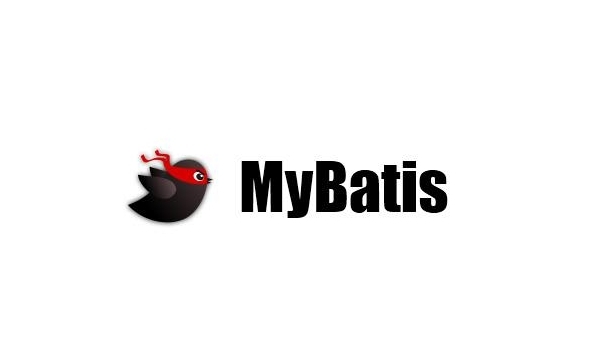choose 标签是按顺序判断其内部 when 标签中的 test 条件出否成立,如果有一个成立,则 choose 结束。当 choose 中所有 when 的条件都不满则时,则执行 otherwise 中的 sql。
MyBatis 虽说给我们的开发带来了很多的便捷,但有些地方写起来依旧比较的麻烦,比如配置 XML 的时候,但是一个好的写法,不仅能为我们节省不少时间、还能能降低出错的概率,下面就给大家分享一些优质的写法:
1、用来循环容器的标签 forEach
foreach 元素的属性主要有 item,index,collection,open,separator,close。
item:集合中元素迭代时的别名,
index:集合中元素迭代时的索引
open:常用语 where 语句中,表示以什么开始,比如以'('开始
separator:表示在每次进行迭代时的分隔符,
close 常用语 where 语句中,表示以什么结束,
在使用 foreach 的时候最关键的也是最容易出错的就是 collection 属性,该属性是必须指定的,但是在不同情况下,该属性的值是不一样的,主要有一下 3 种情况:
如果传入的是单参数且参数类型是一个 List 的时候,collection 属性值为 list .
如果传入的是单参数且参数类型是一个 array 数组的时候,collection 的属性值为 array .
如果传入的参数是多个的时候,我们就需要把它们封装成一个 Map 了,当然单参数也可以封装成 map,实际上如果你在传入参数的时候,在 MyBatis 里面也是会把它封装成一个 Map 的,map 的 key 就是参数名,所以这个时候 collection 属性值就是传入的 List 或 array 对象在自己封装的 map 里面的 key.
针对最后一条,我们来看一下官方说法:
注意 你可以将一个 List 实例或者数组作为参数对象传给 MyBatis,当你这么做的时候,MyBatis 会自动将它包装在一个 Map 中并以名称为键。List 实例将会以“list”作为键,而数组实例的键将是“array”。
所以,不管是多参数还是单参数的 list,array 类型,都可以封装为 map 进行传递。如果传递的是一个 List,则 mybatis 会封装为一个 list 为 key,list 值为 object 的 map,如果是 array,则封装成一个 array 为 key,array 的值为 object 的 map,如果自己封装呢,则 colloection 里放的是自己封装的 map 里的 key 值
复制
//mapper中我们要为这个方法传递的是一个容器,将容器中的元素一个一个的//拼接到xml的方法中就要使用这个forEach这个标签了public List<Entity> queryById(List<String> userids); //对应的xml中如下 <select id="queryById" resultMap="BaseReslutMap" > select * FROM entity where id in <foreach collection="userids" item="userid" index="index" open="(" separator="," close=")"> #{userid} </foreach> </select>1.2.3.4.5.6.7.8.9.10.11.
复制代码
2、concat 模糊查询
复制
//比如说我们想要进行条件查询,但是几个条件不是每次都要使用,那么我们就可以//通过判断是否拼接到sql中 <select id="queryById" resultMap="BascResultMap" parameterType="entity"> SELECT * from entity <where> <if test="name!=null"> name like concat('%',concat(#{name},'%')) </if> </where> </select>1.2.3.4.5.6.7.8.9.10.
复制代码
3、choose (when, otherwise)标签
choose 标签是按顺序判断其内部 when 标签中的 test 条件出否成立,如果有一个成立,则 choose 结束。当 choose 中所有 when 的条件都不满则时,则执行 otherwise 中的 sql。类似于 Java 的 switch 语句,choose 为 switch,when 为 case,otherwise 则为 default。关注:码猿技术专栏,回复关键词:1111 获取阿里内部 Java 性能调优手册!
例如下面例子,同样把所有可以限制的条件都写上,方面使用。choose 会从上到下选择一个 when 标签的 test 为 true 的 sql 执行。安全考虑,我们使用 where 将 choose 包起来,放置关键字多于错误。
复制
<!-- choose(判断参数) - 按顺序将实体类 User 第一个不为空的属性作为:where条件 --> <select id="getUserList_choose" resultMap="resultMap_user" parameterType="com.yiibai.pojo.User"> SELECT * FROM User u <where> <choose> <when test="username !=null "> u.username LIKE CONCAT(CONCAT('%', #{username, jdbcType=VARCHAR}),'%') </when > <when test="sex != null and sex != '' "> AND u.sex = #{sex, jdbcType=INTEGER} </when > <when test="birthday != null "> AND u.birthday = #{birthday, jdbcType=DATE} </when > <otherwise> </otherwise> </choose> </where> </select>1.2.3.4.5.6.7.8.9.10.11.12.13.14.15.16.17.18.19.20.
复制代码
4、selectKey 标签
在 insert 语句中,在 Oracle 经常使用序列、在 MySQL 中使用函数来自动生成插入表的主键,而且需要方法能返回这个生成主键。使用 myBatis 的 selectKey 标签可以实现这个效果。
下面例子,使用 mysql 数据库自定义函数 nextval('student'),用来生成一个 key,并把他设置到传入的实体类中的 studentId 属性上。所以在执行完此方法后,边可以通过这个实体类获取生成的 key。
复制
<!-- 插入学生 自动主键--> <insert id="createStudentAutoKey" parameterType="liming.student.manager.data.model.StudentEntity" keyProperty="studentId"> <selectKey keyProperty="studentId" resultType="String" order="BEFORE"> select nextval('student') </selectKey> INSERT INTO STUDENT_TBL(STUDENT_ID, STUDENT_NAME, STUDENT_SEX, STUDENT_BIRTHDAY, STUDENT_PHOTO, CLASS_ID, PLACE_ID) VALUES (#{studentId}, #{studentName}, #{studentSex}, #{studentBirthday}, #{studentPhoto, javaType=byte[], jdbcType=BLOB, typeHandler=org.apache.ibatis.type.BlobTypeHandler}, #{classId}, #{placeId}) </insert>1.2.3.4.5.6.7.8.9.10.11.12.13.14.15.16.17.18.19.20.
复制代码
调用接口方法,和获取自动生成 key
复制
StudentEntity entity = new StudentEntity(); entity.setStudentName("黎明你好"); entity.setStudentSex(1); entity.setStudentBirthday(DateUtil.parse("1985-05-28")); entity.setClassId("20000001"); entity.setPlaceId("70000001"); this.dynamicSqlMapper.createStudentAutoKey(entity); System.out.println("新增学生ID: " + entity.getStudentId());1.2.3.4.5.6.7.8.
复制代码
5、if 标签
if 标签可用在许多类型的 sql 语句中,我们以查询为例。首先看一个很普通的查询:
复制
<!-- 查询学生list,like姓名 --> <select id="getStudentListLikeName" parameterType="StudentEntity" resultMap="studentResultMap"> SELECT * from STUDENT_TBL ST WHERE ST.STUDENT_NAME LIKE CONCAT(CONCAT('%', #{studentName}),'%') </select>1.2.3.4.5.
复制代码
但是此时如果 studentName 为 null,此语句很可能报错或查询结果为空。此时我们使用 if 动态 sql 语句先进行判断,如果值为 null 或等于空字符串,我们就不进行此条件的判断,增加灵活性。
参数为实体类 StudentEntity。将实体类中所有的属性均进行判断,如果不为空则执行判断条件。
复制
<!-- 2 if(判断参数) - 将实体类不为空的属性作为where条件 --> <select id="getStudentList_if" resultMap="resultMap_studentEntity" parameterType="liming.student.manager.data.model.StudentEntity"> SELECT ST.STUDENT_ID, ST.STUDENT_NAME, ST.STUDENT_SEX, ST.STUDENT_BIRTHDAY, ST.STUDENT_PHOTO, ST.CLASS_ID, ST.PLACE_ID FROM STUDENT_TBL ST WHERE <if test="studentName !=null "> ST.STUDENT_NAME LIKE CONCAT(CONCAT('%', #{studentName, jdbcType=VARCHAR}),'%') </if> <if test="studentSex != null and studentSex != '' "> AND ST.STUDENT_SEX = #{studentSex, jdbcType=INTEGER} </if> <if test="studentBirthday != null "> AND ST.STUDENT_BIRTHDAY = #{studentBirthday, jdbcType=DATE} </if> <if test="classId != null and classId!= '' "> AND ST.CLASS_ID = #{classId, jdbcType=VARCHAR} </if> <if test="classEntity != null and classEntity.classId !=null and classEntity.classId !=' ' "> AND ST.CLASS_ID = #{classEntity.classId, jdbcType=VARCHAR} </if> <if test="placeId != null and placeId != '' "> AND ST.PLACE_ID = #{placeId, jdbcType=VARCHAR} </if> <if test="placeEntity != null and placeEntity.placeId != null and placeEntity.placeId != '' "> AND ST.PLACE_ID = #{placeEntity.placeId, jdbcType=VARCHAR} </if> <if test="studentId != null and studentId != '' "> AND ST.STUDENT_ID = #{studentId, jdbcType=VARCHAR} </if> </select>1.2.3.4.5.6.7.8.9.10.11.12.13.14.15.16.17.18.19.20.21.22.23.24.25.26.27.28.29.30.31.32.33.34.35.36.
复制代码
使用时比较灵活, new 一个这样的实体类,我们需要限制那个条件,只需要附上相应的值就会 where 这个条件,相反不去赋值就可以不在 where 中判断。
复制
public void select_test_2_1() { StudentEntity entity = new StudentEntity(); entity.setStudentName(""); entity.setStudentSex(1); entity.setStudentBirthday(DateUtil.parse("1985-05-28")); entity.setClassId("20000001"); //entity.setPlaceId("70000001"); List<StudentEntity> list = this.dynamicSqlMapper.getStudentList_if(entity); for (StudentEntity e : list) { System.out.println(e.toString()); } }1.2.3.4.5.6.7.8.9.10.11.12.
复制代码
6、if + where 的条件判断
当 where 中的条件使用的 if 标签较多时,这样的组合可能会导致错误。我们以在 3.1 中的查询语句为例子,当 java 代码按如下方法调用时:
复制
@Test public void select_test_2_1() { StudentEntity entity = new StudentEntity(); entity.setStudentName(null); entity.setStudentSex(1); List<StudentEntity> list = this.dynamicSqlMapper.getStudentList_if(entity); for (StudentEntity e : list) { System.out.println(e.toString()); } }1.2.3.4.5.6.7.8.9.10.
复制代码
如果上面例子,参数 studentName 为 null,将不会进行 STUDENT_NAME 列的判断,则会直接导“WHERE AND”关键字多余的错误 SQL。
这时我们可以使用 where 动态语句来解决。这个“where”标签会知道如果它包含的标签中有返回值的话,它就插入一个‘where’。此外,如果标签返回的内容是以 AND 或 OR 开头的,则它会剔除掉。
上面例子修改为:
复制
<!-- 3 select - where/if(判断参数) - 将实体类不为空的属性作为where条件 --> <select id="getStudentList_whereIf" resultMap="resultMap_studentEntity" parameterType="liming.student.manager.data.model.StudentEntity"> SELECT ST.STUDENT_ID, ST.STUDENT_NAME, ST.STUDENT_SEX, ST.STUDENT_BIRTHDAY, ST.STUDENT_PHOTO, ST.CLASS_ID, ST.PLACE_ID FROM STUDENT_TBL ST <where> <if test="studentName !=null "> ST.STUDENT_NAME LIKE CONCAT(CONCAT('%', #{studentName, jdbcType=VARCHAR}),'%') </if> <if test="studentSex != null and studentSex != '' "> AND ST.STUDENT_SEX = #{studentSex, jdbcType=INTEGER} </if> <if test="studentBirthday != null "> AND ST.STUDENT_BIRTHDAY = #{studentBirthday, jdbcType=DATE} </if> <if test="classId != null and classId!= '' "> AND ST.CLASS_ID = #{classId, jdbcType=VARCHAR} </if> <if test="classEntity != null and classEntity.classId !=null and classEntity.classId !=' ' "> AND ST.CLASS_ID = #{classEntity.classId, jdbcType=VARCHAR} </if> <if test="placeId != null and placeId != '' "> AND ST.PLACE_ID = #{placeId, jdbcType=VARCHAR} </if> <if test="placeEntity != null and placeEntity.placeId != null and placeEntity.placeId != '' "> AND ST.PLACE_ID = #{placeEntity.placeId, jdbcType=VARCHAR} </if> <if test="studentId != null and studentId != '' "> AND ST.STUDENT_ID = #{studentId, jdbcType=VARCHAR} </if> </where> </select>
复制代码
写在最后
前端的世界总是在不断变化,作为开发者,我们需要保持好奇心和学习热情,不断探索新的技术,只有这样,我们才能在这个快速发展的时代中立于不败之地。低代码也是一个值得我们深入探索的领域,让我们拭目以待,它将给前端世界带来怎样的变革。
介绍一款程序员都应该知道的软件JNPF快速开发平台,很多人都尝试用过它,它是功能的集大成者,任何信息化系统都可以基于它开发出来。
JNPF 可以实现应用从创建、配置、开发、测试到发布、运维、升级等完整生命周期的管理。减少了传统应用程序的代码编写量,通过图形化、可视化的界面,以拖放组件的方式,即可快速生成应用程序的产品,大幅降低了开发企业管理类软件的难度。
希望这篇文章对你有所帮助~









评论